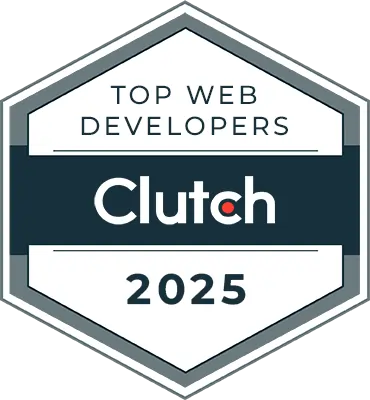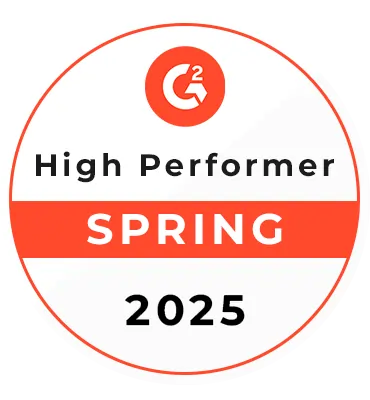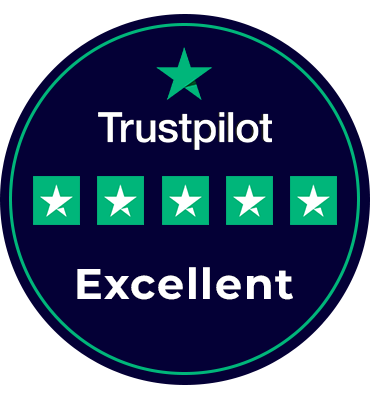How to Modernize Legacy Applications: A Step-by-Step Guide
Manish Kumawat
Last Updated on: 08 December 2025
Irrespective of which industry you belong to, ‘Modernization’ is a must, not a choice. In other words, we can say the modernization of your digital platform is the key to your business. The same applies in the case of mobile applications, too. Then comes the concern about how to modernize a legacy application.
Legacy application modernization is about making your business app fit for the latest needs using advanced technologies. The ultimate aim of this legacy app modernization is to make your users happy and eventually grow your business. That's why we need to discuss the concern about how to modernize a legacy application in detail.
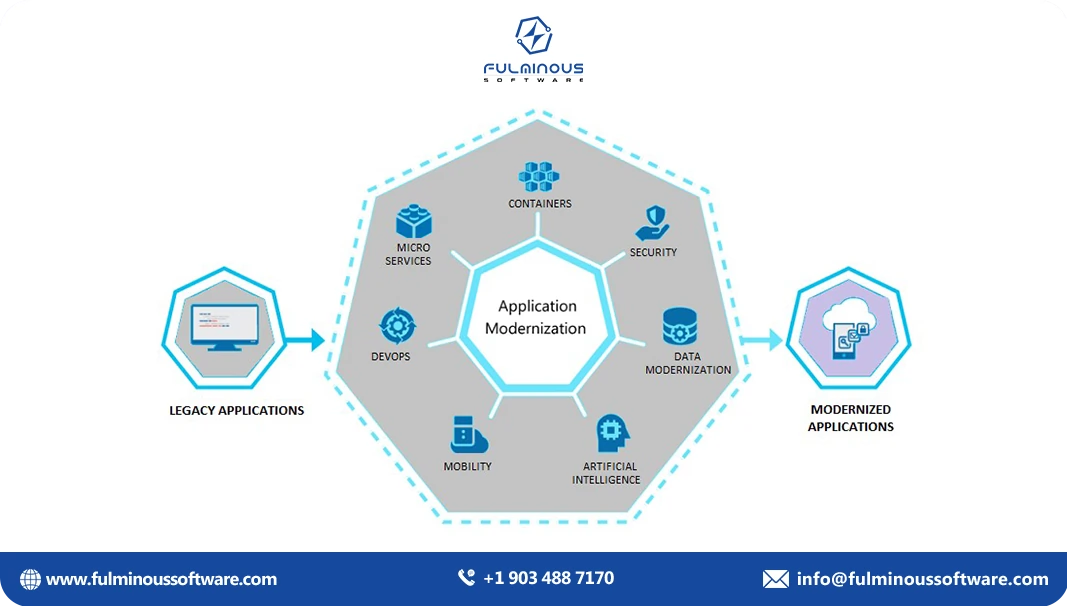
From a business point of view, the concerns such as how to, how much, and when to are all very relevant. As legacy app modernization has many stages and processes, it's necessary to know the steps before getting into the process. In this guide, we will see the step-by-step guidance for an effective legacy app modernization.
Table of Contents
Cast Out the Doubts First
Do you know? Why do businesses think twice before application modernization?
The major reasons can be:
- The misunderstanding that legacy app modernization is costly
- The fear of downtime during the modernization process
- The concern about data loss during the modernization process.
But remember, all these are just misconceptions, and the reasons will be discussed in the following sections.
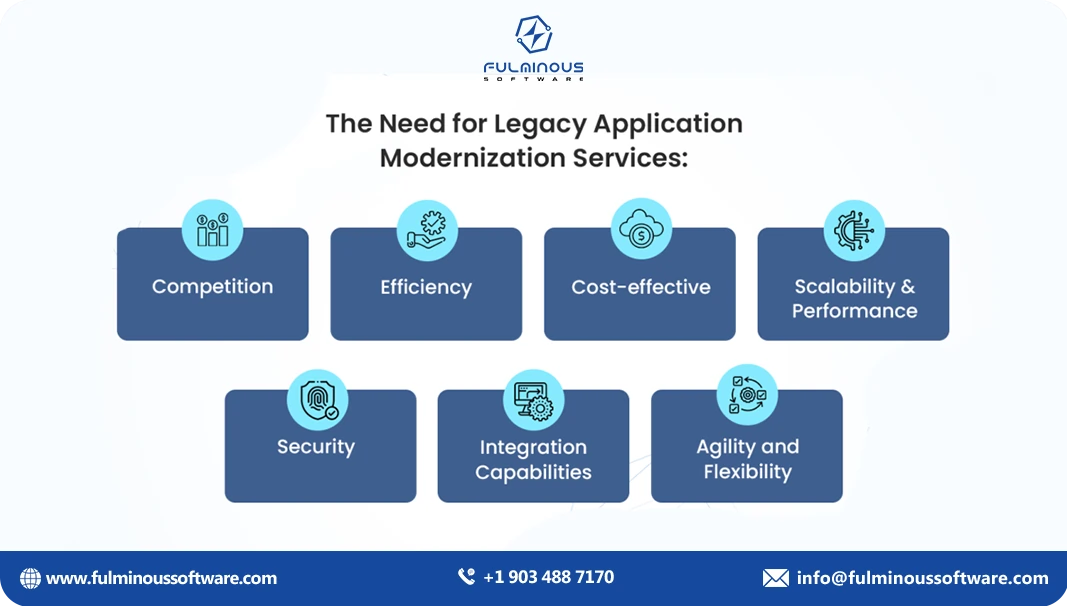
See the Benefits of Modernizing Legacy Applications
Before seeing the benefits, let’s have a look at the drawbacks of an outdated business app.
- Slow performance and frequent crashes
- High maintenance and operational costs
- Incompatibility with modern tools and platforms
- Limited scalability and flexibility
- Poor user experience and outdated UI
- Increased security vulnerabilities
- Lack of integration with cloud or APIs
- Difficulty in finding skilled developers or support
In short, an outdated dating app is the biggest hindrance to your business and a powerful enemy of your business, which pulls you back from the race to success. By modernizing your dating app
- Improved speed and responsiveness.
- Stronger data security and updated compliance support.
- Seamless cloud migration.
- Reduced IT maintenance workload and infrastructure costs.
- Easier integration with APIs and modern software tools.
- Enhanced user interface and experience.
- Support for mobile devices and remote workforce operations.
- Real-time analytics and reporting.
- Increased system reliability.
- Easy, continuous updates and innovation.
Overall, all the benefits of app modernizations are projected towards the success of a business. So legacy app modernization is not just a technical need; it's the cornerstone of your business growth.
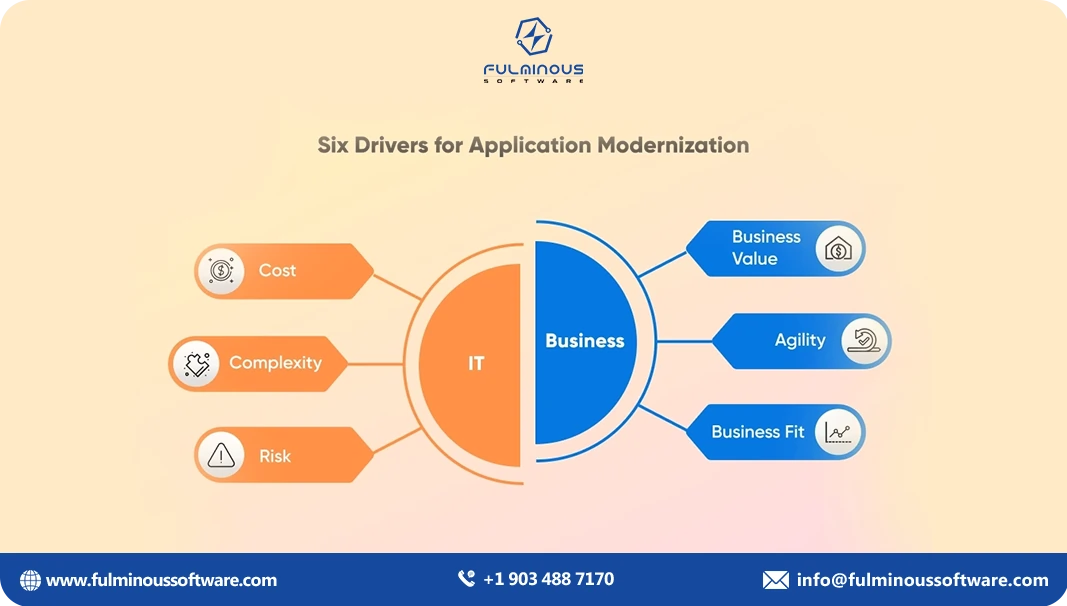
How to Modernize Legacy Applications: Step-by-Step Process
Step 1: Discovery, Assessment, Goal Setting
In order to improve, renovate, or modernize, you need to evaluate your current status clearly. So the initial step is to know where you are, what you have, what challenges you are facing, how much budget you have, and what you are expecting.
The main goal of this stage will be to:
- Evaluate the architecture, performance, tech stack, and pain points.
- Identify mission-critical features vs. obsolete modules.
- Use tools like Azure Migrate, AWS Application Discovery, and CAST Highlight.
Once you understand the current status, think about what you are expecting.
Ask yourself:
- Do you want to migrate to the cloud?
- Are you modernizing for speed, compliance, or scalability?
- Is cost reduction the primary goal?
This is crucial if you're asking how to modernize your legacy applications effectively. This can only be done with the assistance of a legacy app modernization consultancy like Fulminous Software. In the eyes of a legacy app modernization expert, all the loopholes and challenges will be visible. So that they can guide you to the right way to modernize your app.
Step 2: Choose the Right Modernization Strategy
The next stage is to choose strategies based on the evaluation you have done in the previous stage. Here are 7 common approaches:
- Rehost (Lift & Shift): Move the application to cloud infrastructure without changing the code.
- Replatform: Minor code changes while migrating to modern platforms (e.g., database or OS upgrade).
- Refactor: Code-level changes to improve performance and maintainability (e.g., breaking monolith into microservices).
- Re-architect: Redesign the architecture entirely to support scalability and DevOps practices.
- Rebuild: Recreate the entire application using modern technologies.
- Replace: Adopt an off-the-shelf SaaS product instead of custom rebuilding.
- Retire: Decommission obsolete or unused parts of the legacy application that no longer provide business value, reducing maintenance overhead.
But you have to take strategies based on your budget, timeline, and ultimate goal. In this stage, you also need a legacy app modernization expert's guidance. From their experience, they can help you choose the best.
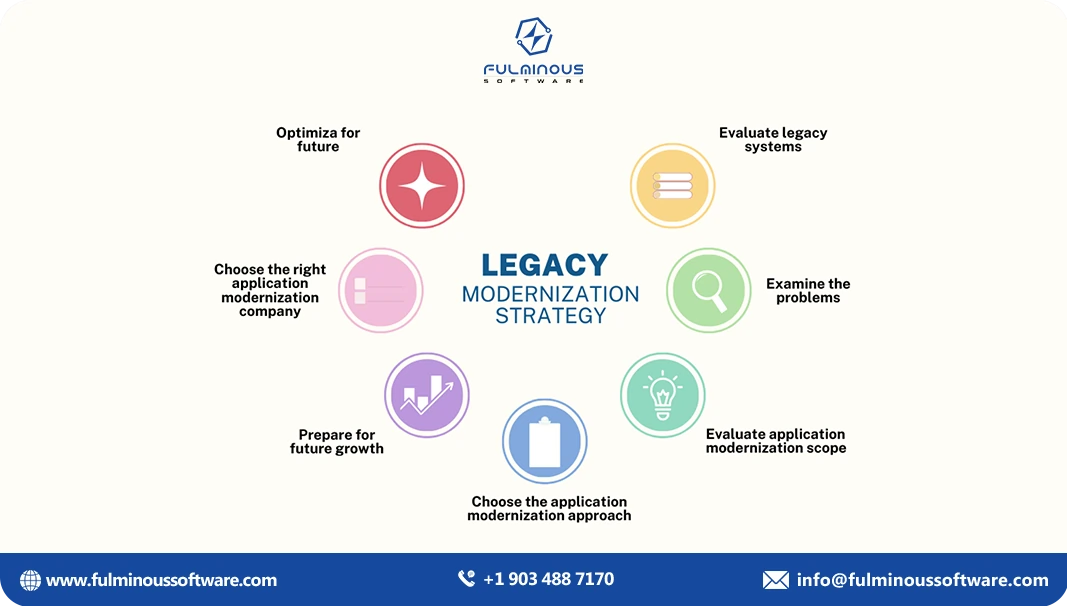
Step 3: Break the Monolith (If Applicable)
Step 3 is breaking the monolithic nature of the existing app, if applicable. Many legacy apps are monolithic, meaning all components are tightly coupled. Modernize by decomposing into microservices:
- Deploy independently
- Scale modules separately
- Enable agile development
- Integrate easily with APIs and cloud-native services
This process is useful for the whole development process by saving time, cost, and effort.
Step 4: Select a Modern Tech Stack
The modernization of your legacy app completely depends on the technologies you are going to use. Modernize using technologies like:
- Frontend: React, Angular, Vue.js
- Backend: Node.js, Spring Boot, .NET Core
- Databases: PostgreSQL, MongoDB, Azure SQL
- Containers: Docker, Kubernetes
- DevOps: Jenkins, GitLab CI/CD, Azure DevOps
- Cloud: Azure, AWS, Google Cloud
- Security OAuth 2.0, RBAC, TLS/SSL
When you choose the right technology for your app modernization, you are securing the future of your app, too. Which means an effective investment for the long run. So, choose a legacy app modernization company with full-stack experience and proficiency in all the latest technologies.
Step 5: Plan and Execute Cloud Migration
Next comes the major stage–planning and execution of cloud migration. Are you thinking about how to modernize legacy ERP applications? One of the top ways is by migrating them to a cloud platform like Azure, AWS, or Google Cloud.
Benefits:
- Auto-scaling & high availability
- Improved disaster recovery
- Pay-as-you-go pricing
- Easy integration with DevOps & AI/ML tools
A legacy app modernization service provider with deep knowledge of cloud technology and platforms can help you in this stage, so when you choose to prefer a company that holds expertise in multiple technologies.
Step 6: Update Security & Compliance
Enhancing the overall security of the legacy app is a major task in the modernization process. Modernize your approach to:
- Role-based access controls
- Data encryption
- Vulnerability scanning
- Compliance automation (GDPR, HIPAA, ISO)
Don’t take this stage as a normal step in your legacy application modernization approach. Get assistance from a legacy app modernization company with top security experts so that you can achieve the best security features.
Step 7: Test Rigorously
Here comes the testing stage, where you find the errors and drawbacks before the launch. It helps you to cover all the aspects with zero errors.
- Unit, integration, regression, and performance tests
- Simulate real-world load
- Use automation tools for speed and accuracy
- Validate outputs with business users
A legacy app modernization company with top testing experts can make this task simple for you. Carry out this step carefully so that your app works smoothly on all devices.
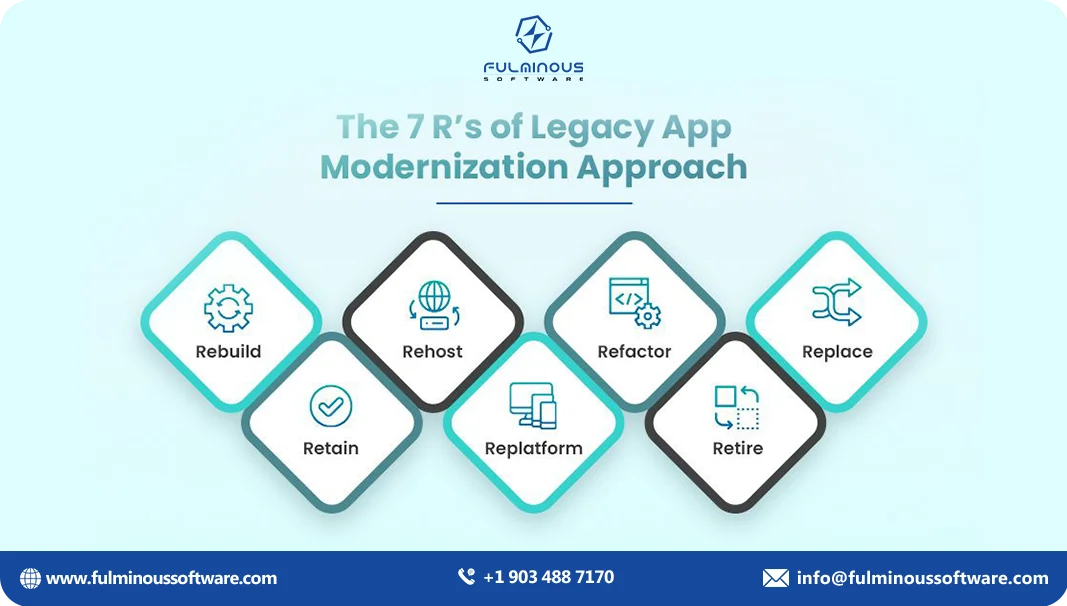
Step 8: Deploy in Phases
Deployment is all about publishing. When you deploy your app, do it in phases so that users get a perfect application and avoid bad first impressions.
- Roll out features gradually using blue-green or canary deployments
- Monitor performance and user feedback
- Ensure rollback strategies are in place
Even in this stage, minor mistakes can impact the first impression of your app. So get advice from a top legacy app modernization expert with deployment experts.
Step 9: Continuous Improvement
Once you have modernized your app, you need to monitor it regularly and upgrade it wisely. This step includes:
- Monitor metrics continuously
- Collect feedback
- Update based on business shifts or user needs
- Use analytics and observability tools like Azure Monitor, Datadog, and Prometheus
This stage also needs careful consideration. So, choose a legacy application modernization agency that offers long-term support.
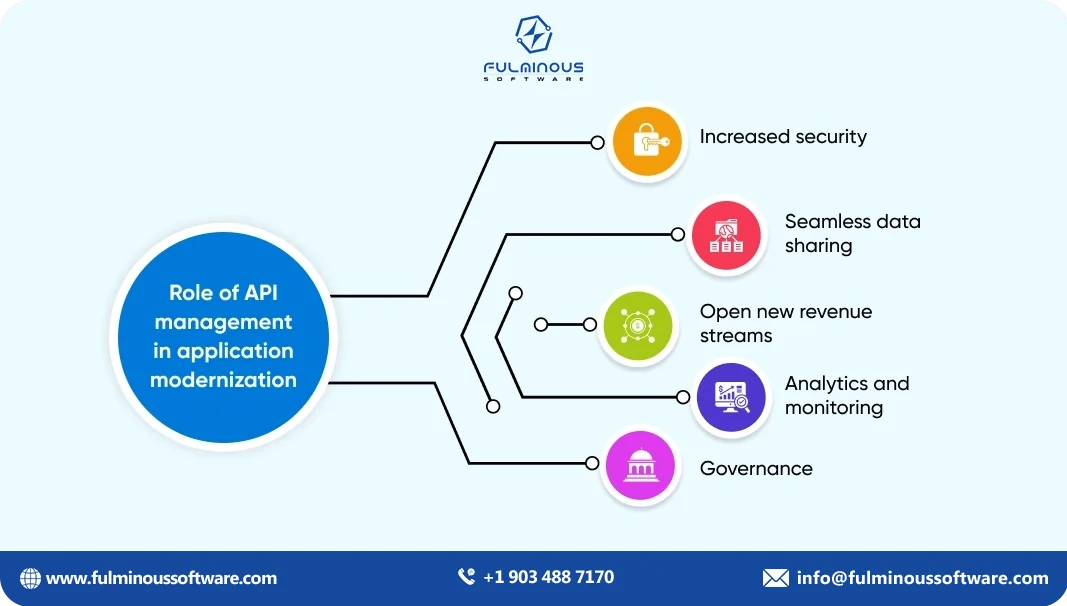
Let Fulminous Software Help You in Legacy App Modernization
The application modernization market is growing at a rate of 18.7% from 2024 to 2031. As you have noticed in each step, the legacy application modernization agency must possess several qualities and expertise. If you ask how to modernize legacy applications, we have a set of practices.
As a leading software modernization and cloud transformation partner, Fulminous Software provides:
- Cloud-native re-architecture
- UI/UX modernization
- API development
- Containerization & DevOps
- ERP modernization solutions
- Post-modernization support
Along with that, we offer:
Now you have found the answers for how to get affordable legacy app modernization with zero downtime and zero data loss. Yes, collaborate with us!
Conclusion
Now you have the answer for how to modernize your legacy applications. Now it's time to take steps and modernize your outdated business app. We can guarantee that this process can have a great positive impact on your business. So, contact us now and get our trending app modernization services. Share this article too.
FAQs
Q1. What is legacy application modernization?
Legacy application modernization is the process of updating outdated systems using new technologies. It’s essential if you’re wondering how to modernize legacy applications efficiently.
Q2. How to modernize legacy applications efficiently?
If you're asking how to modernize legacy applications, follow a step-by-step approach: assess, define goals, select a strategy, cloud migration, update stack, and test rigorously.
Q3. How much does legacy application modernization cost?
The cost to modernize your legacy applications depends on the chosen approach—like rehosting, refactoring, or rebuilding—and the size and complexity of the system.
Q4. How to modernize legacy ERP applications like SAP or Oracle?
Wondering how to modernize legacy ERP applications? Use cloud migration, SaaS adoption, automation, API integration, and mobile enablement to modernize your ERP systems.
Q5. What are the common legacy application modernization approaches?
Common legacy application modernization approaches include: rehost, replatform, refactor, rearchitect, rebuild, replace, and retire—each offering unique benefits based on business needs.
Q6. Why is cloud migration important in legacy modernization?
Cloud migration is vital when exploring how to modernize legacy applications because it enables scalability, availability, and cost savings compared to legacy infrastructures.
Q7. Can Fulminous Software help modernize our legacy apps?
Yes. Fulminous Software specializes in how to modernize your legacy applications through custom strategies, cloud migration, UI/UX upgrades, and full-stack modernization services.
HIRE A TOP SOFTWARE DEVELOPMENT COMPANY

 Verified
Expert in Software & Web App Engineering
Verified
Expert in Software & Web App Engineering
I am Manish Kumawat, co-founder of Fulminous Software, a top leading customized software design and development company with a global presence in the USA, Australia, UK, and Europe. Over the last 10+ years, I am designing and developing web applications, e-commerce online stores, and software solutions custom tailored according to business industries needs. Being an experienced entrepreneur and research professional my main vision is to enlighten business owners, and worldwide audiences to provide in-depth IT sector knowledge with latest IT trends to grow businesses online.
Partner with Top-Notch Web Application Development Company!
Discuss your Custom Application Requirements on info@fulminoussoftware.com or call us on +1-903 488 7170.
15 Days Risk-Free Trial